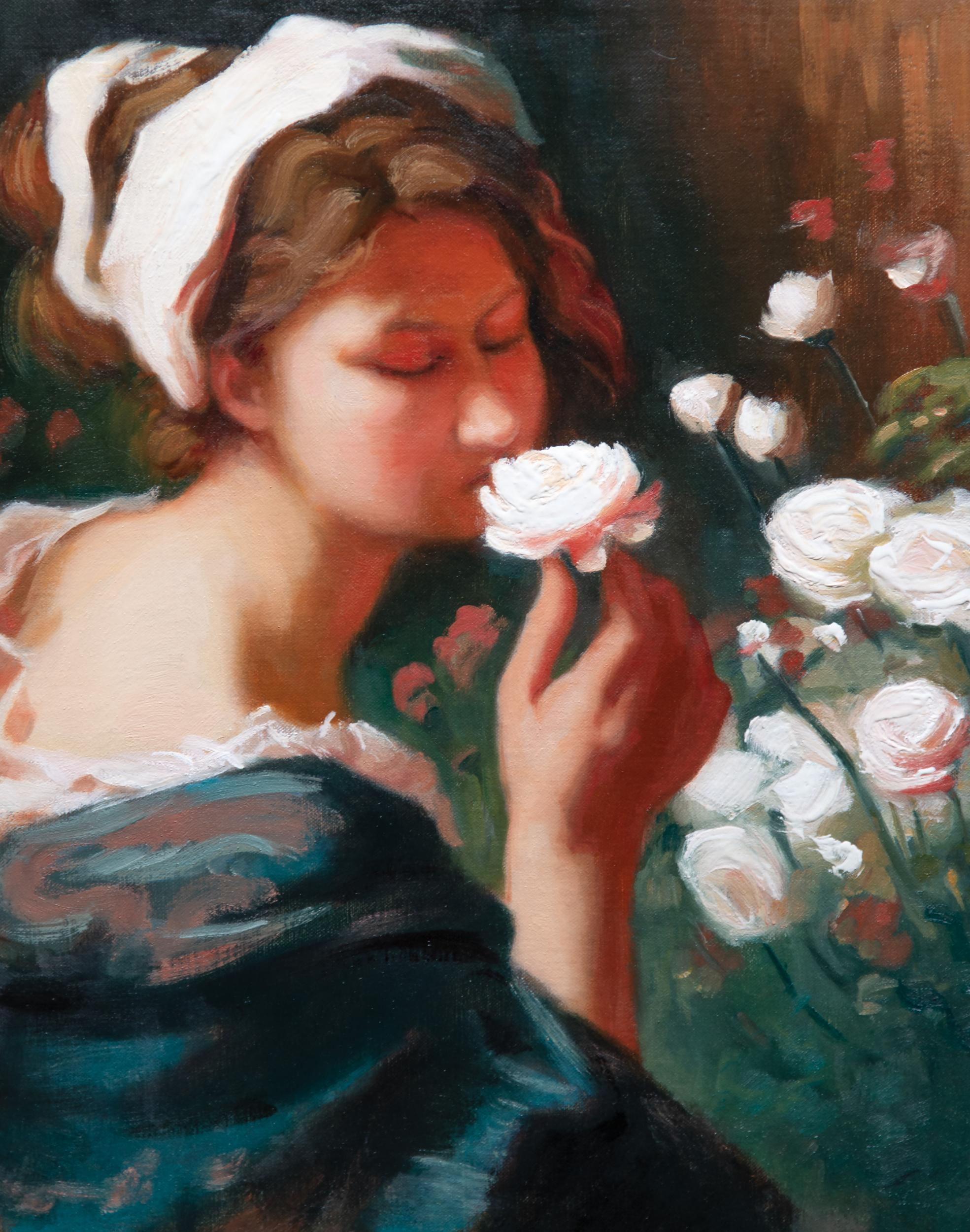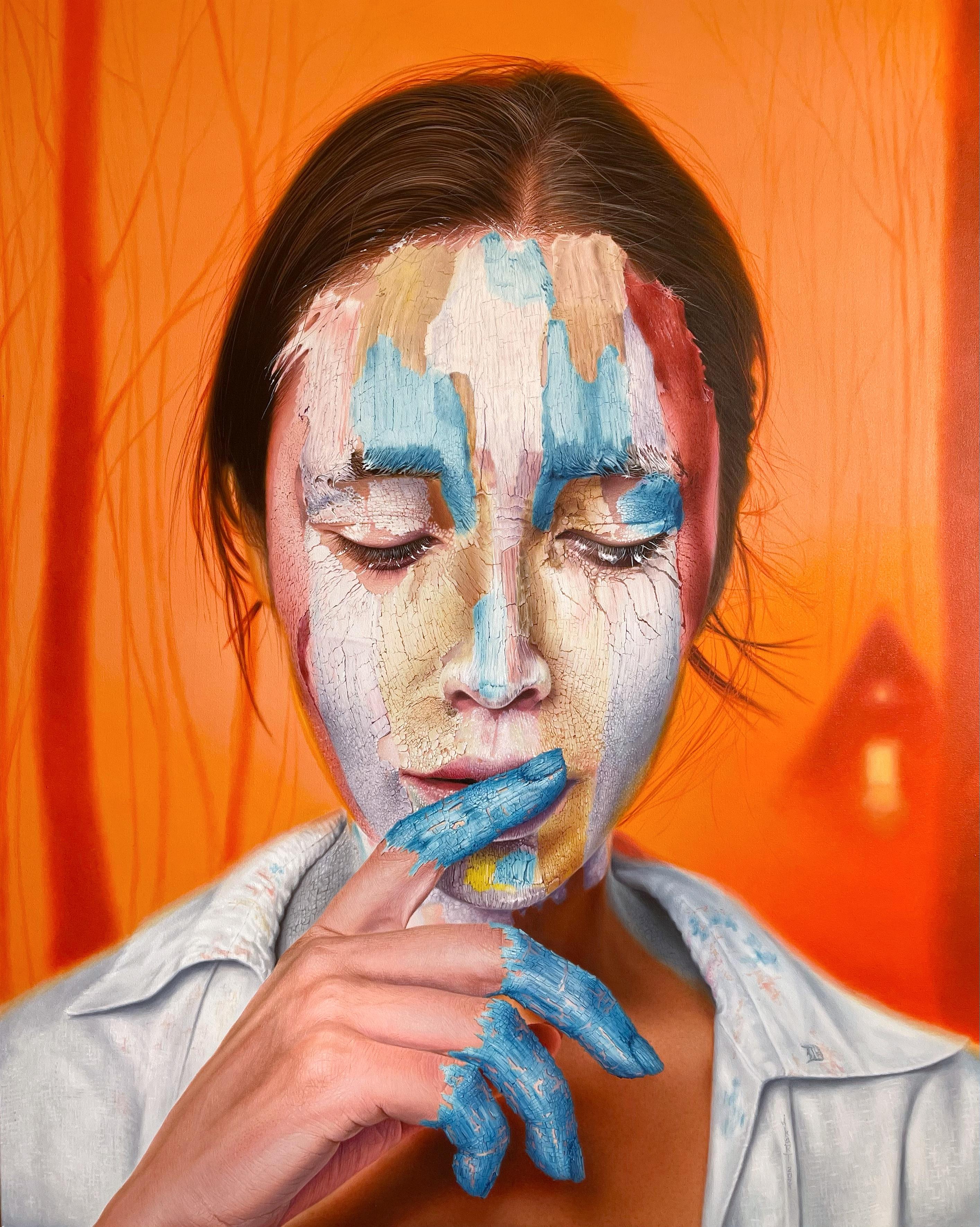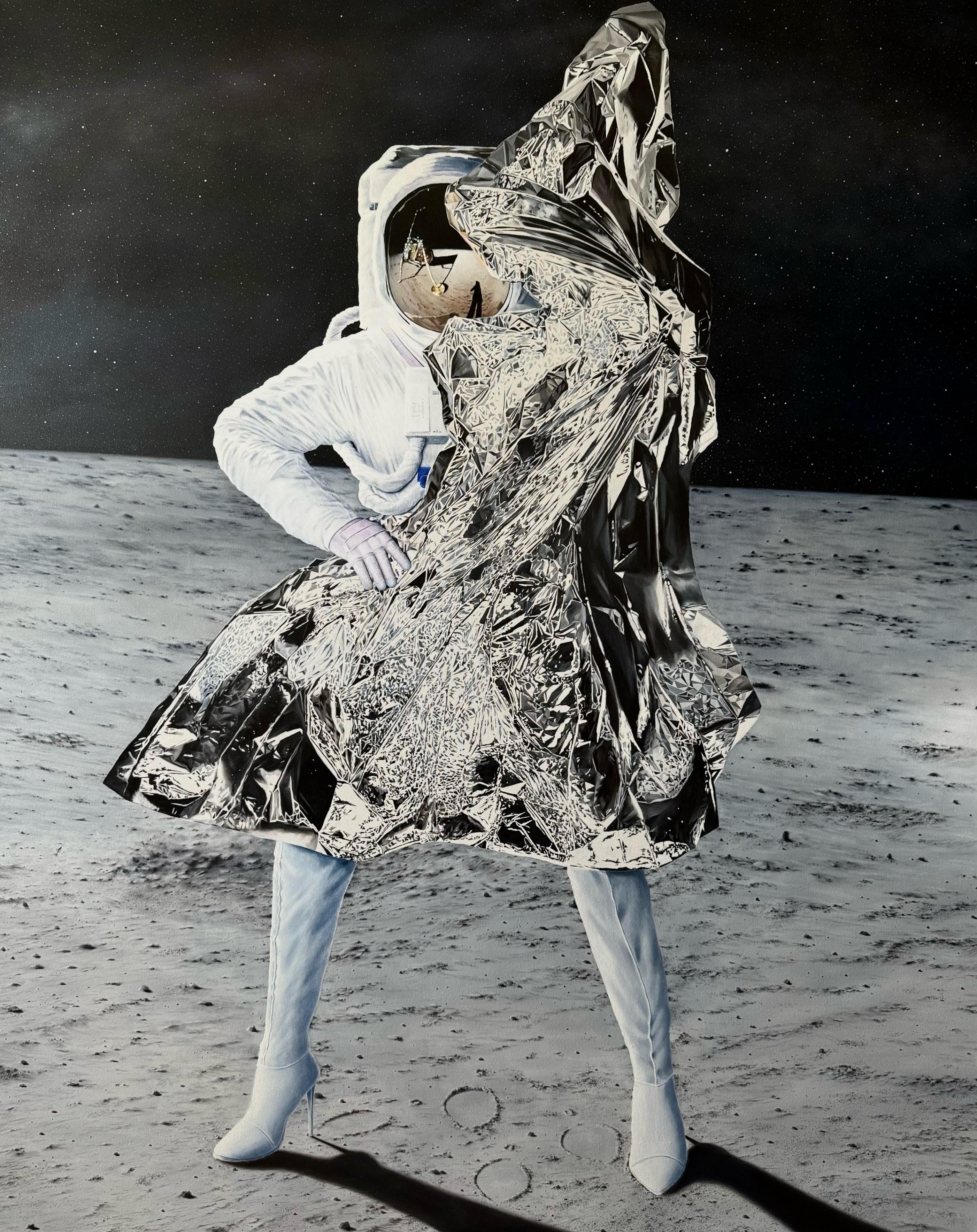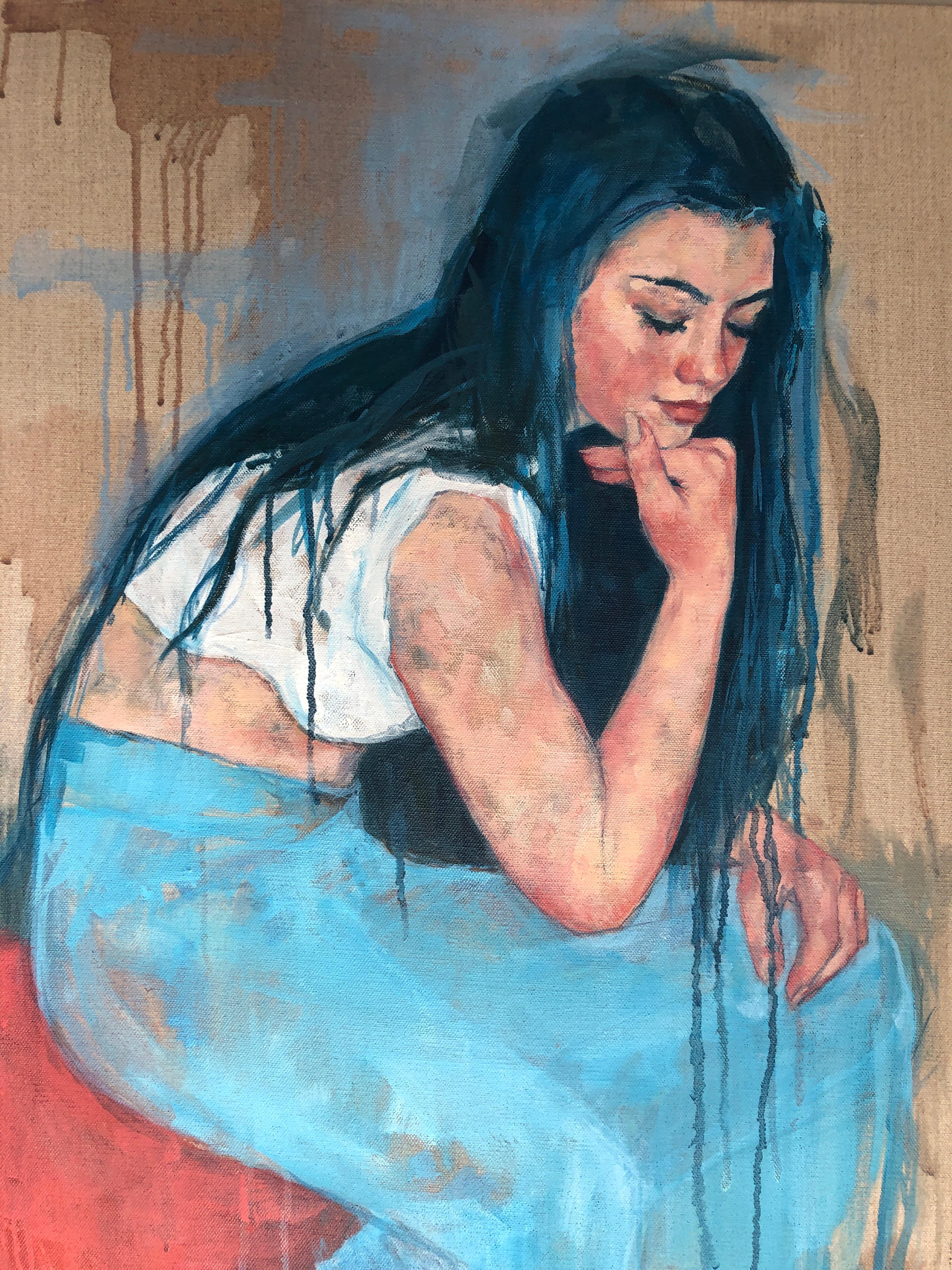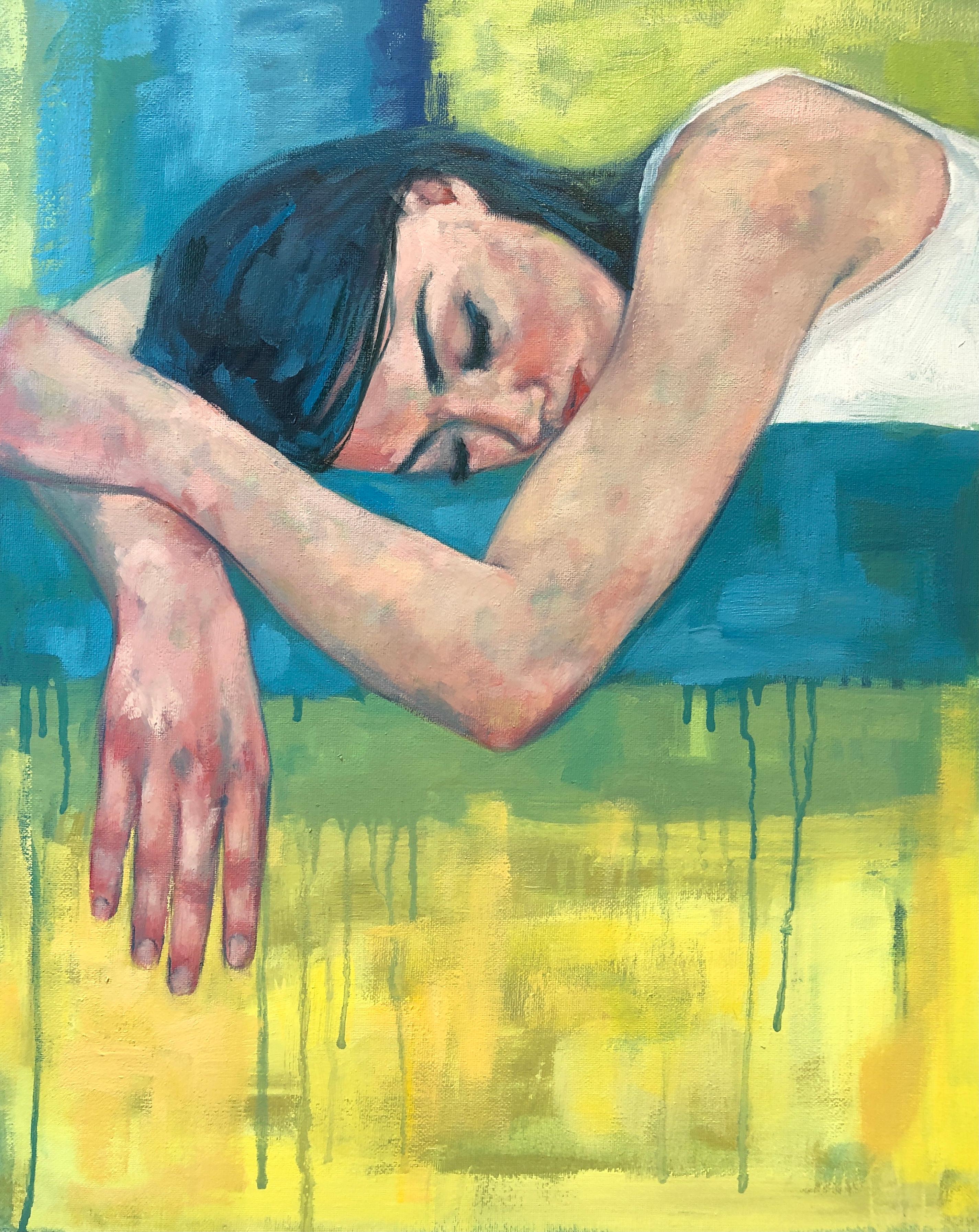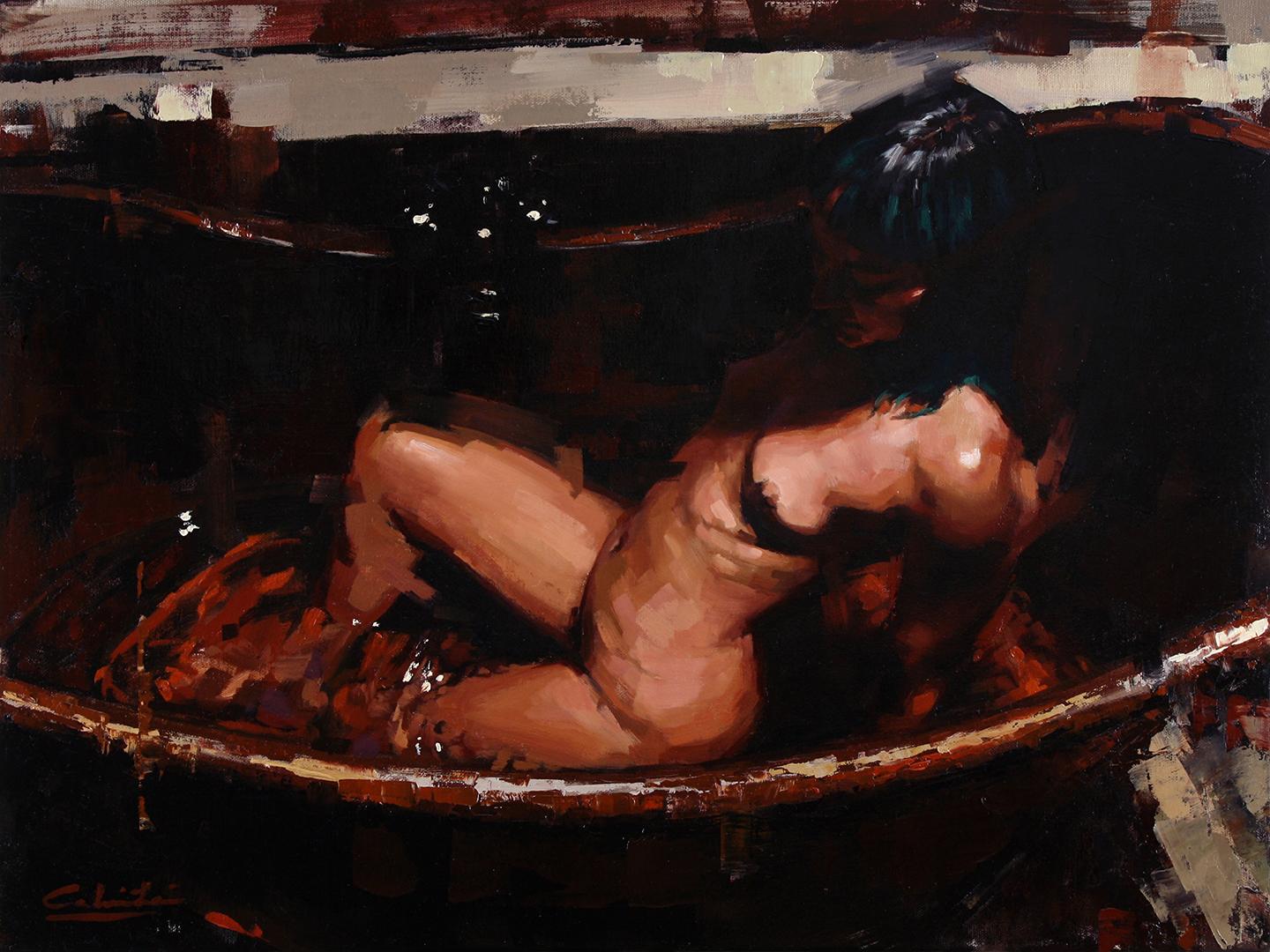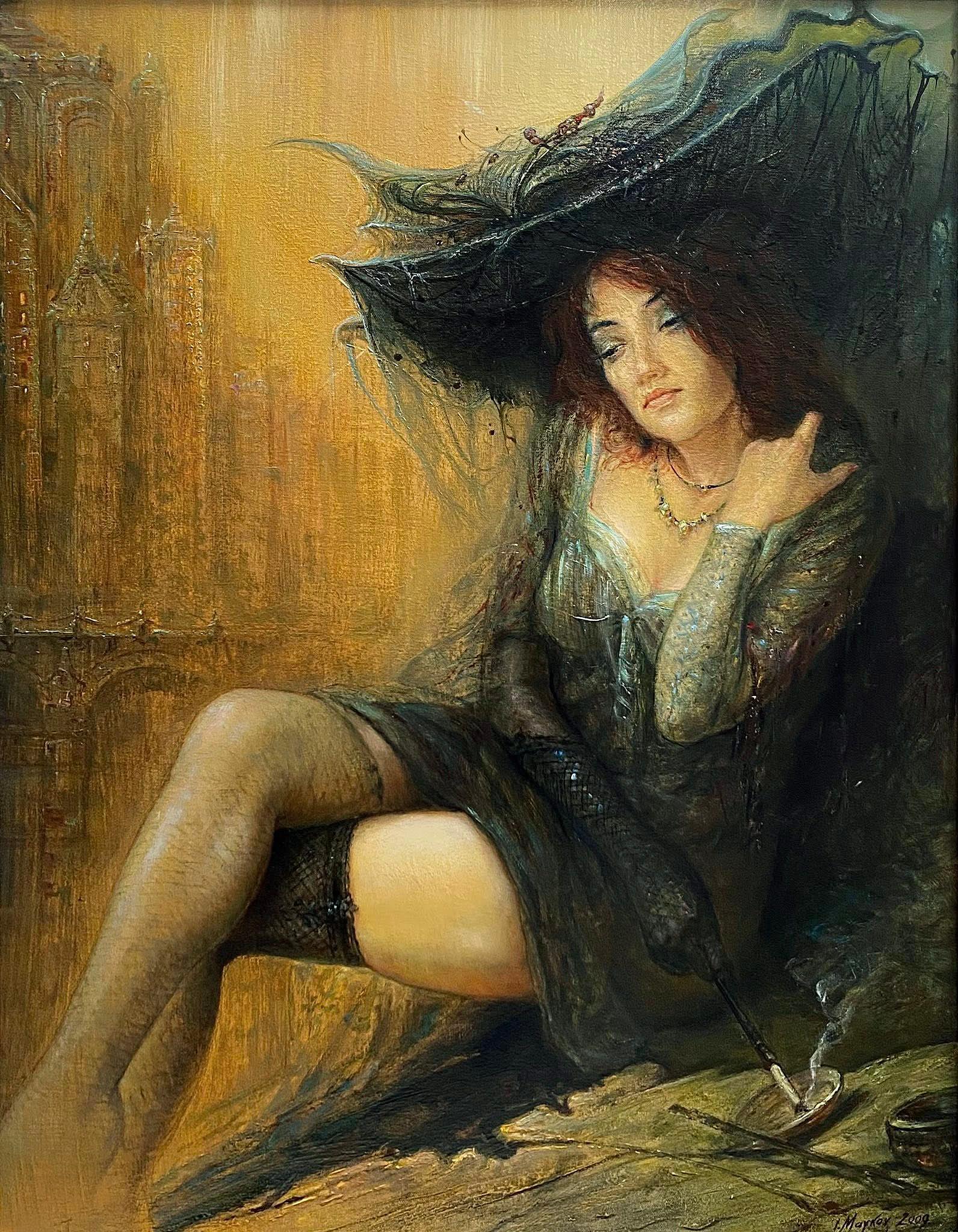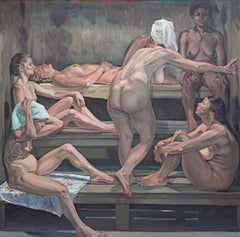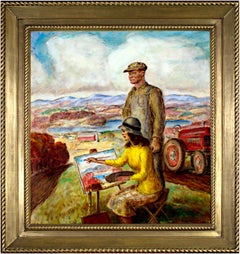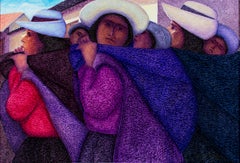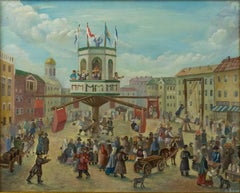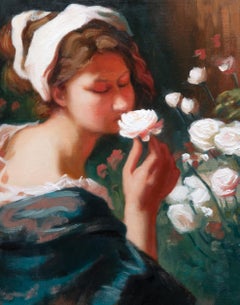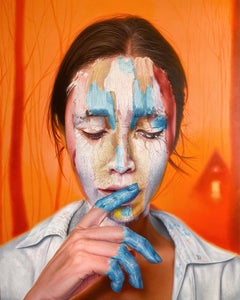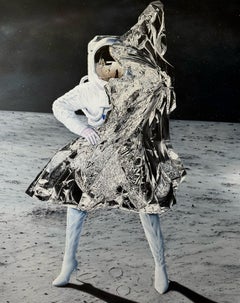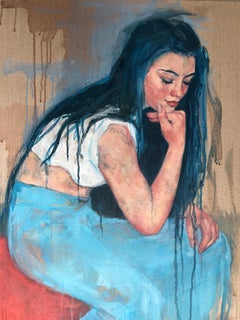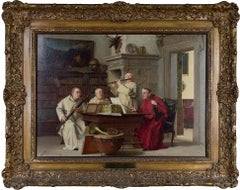
"The Concert, " Oil on Canvas Portrait of Monks Playing Instruments
View Similar Items
Want more images or videos?
Request additional images or videos from the seller
1 of 10
Thure Cederstrom"The Concert, " Oil on Canvas Portrait of Monks Playing Instruments19th Century
19th Century
$16,000List Price
About the Item
- Creator:Thure Cederstrom (1843 - 1924)
- Creation Year:19th Century
- Dimensions:Height: 22 in (55.88 cm)Width: 27.5 in (69.85 cm)
- Medium:
- Movement & Style:
- Period:
- Condition:
- Gallery Location:Milwaukee, WI
- Reference Number:Seller: 12467c1stDibs: LU60534933711
About the Seller
4.9
Platinum Seller
Premium sellers with a 4.7+ rating and 24-hour response times
Established in 1966
1stDibs seller since 2017
438 sales on 1stDibs
Typical response time: 3 hours
Authenticity Guarantee
In the unlikely event there’s an issue with an item’s authenticity, contact us within 1 year for a full refund. DetailsMoney-Back Guarantee
If your item is not as described, is damaged in transit, or does not arrive, contact us within 7 days for a full refund. Details24-Hour Cancellation
You have a 24-hour grace period in which to reconsider your purchase, with no questions asked.Vetted Professional Sellers
Our world-class sellers must adhere to strict standards for service and quality, maintaining the integrity of our listings.Price-Match Guarantee
If you find that a seller listed the same item for a lower price elsewhere, we’ll match it.Trusted Global Delivery
Our best-in-class carrier network provides specialized shipping options worldwide, including custom delivery.More From This Seller
View AllNude Oil Female Figures Women Realism Expressionism Contemporary Sensual Signed
By Alicia Czechowski
Located in Milwaukee, WI
"The Sauna" is an original oil painting on canvas signed by the artist Alicia Czechowski. It depicts six nude female figures lounging in a sauna. These figures have a wide variety of...
Category
1980s Realist Nude Paintings
Materials
Oil
'Sketching Wisconsin' original oil painting, Signed
By John Steuart Curry
Located in Milwaukee, WI
John Steuart Curry
"Sketching Wisconsin," 1946
oil on canvas
31.13 x 28 inches, canvas
39.75 x 36.75 x 2.5 inches, frame
Signed and dated lower right
Overall excellent condition
Presented in a 24-karat gold leaf hand-carved wood frame
John Steuart Curry (1897-1946) was an American regionalist painter active during the Great Depression and into World War II. He was born in Kansas on his family’s farm but went on to study art in Chicago, Paris and New York as young man. In Paris, he was exposed to the work of masters such as Peter Paul Rubens, Eugène Delacroix and Jacques-Louis David. As he matured, his work showed the influence of these masters, especially in his compositional decisions. Like the two other Midwestern regionalist artists that are most often grouped with him, Grant Wood (American, 1891-1942) and Thomas Hart Benton (American, 1889-1975), Curry was interested in representational works containing distinctly American subject matter. This was contrary to the popular art at the time, which was moving closer and closer to abstraction and individual expression.
Sketching Wisconsin is an oil painting completed in 1946, the last year of John Steuart Curry’s life, during which time he was the artist-in-residence at the University of Wisconsin in Madison. The painting is significant in Curry’s body of work both as a very revealing self-portrait, and as a landscape that clearly and sensitively depicts the scenery of southern Wisconsin near Madison. It is also a portrait of the artist’s second wife, Kathleen Gould Curry, and is unique in that it contains a ‘picture within a picture,’ a compositional element that many early painting masters used to draw the eye of the viewer. This particular artwork adds a new twist to this theme: Curry’s wife is creating essentially the same painting the viewer is looking at when viewing Sketching Wisconsin.
The triangular composition of the figures in the foreground immediately brings focus to a younger Curry, whose head penetrates the horizon line and whose gaze looks out towards the viewer. The eye then moves down to Mrs. Curry, who, seated on a folding stool and with her hand raised to paint the canvas on the easel before her, anchors the triangular composition. The shape is repeated in the legs of the stool and the easel. Behind the two figures, stripes of furrowed fields fall away gently down the hillside to a farmstead and small lake below. Beyond the lake, patches of field and forest rise and fall into the distance, and eventually give way to blue hills.
Here, Curry has subverted the traditional artist’s self-portrait by portraying himself as a farmer first and an artist second. He rejects what he sees as an elitist art world of the East Coast and Europe. In this self-portrait he depicts himself without any pretense or the instruments of his profession and with a red tractor standing in the field behind him as if he was taking a break from the field work. Here, Curry’s wife symbolizes John Steuart Curry’s identity as an artist. Compared with a self-portrait of the artist completed a decade earlier, this work shows a marked departure from how the artist previously presented and viewed himself. In the earlier portrait, Curry depicted himself in the studio with brushes in hand, and with some of his more recognizable and successful canvases behind him. But in Sketching Wisconsin, Curry has taken himself out of the studio and into the field, indicating a shift in the artist’s self-conception.
Sketching Wisconsin’s rural subject also expresses Curry’s populist ideals, that art could be relevant to anyone. This followed the broad educational objectives of UW’s artist-in-residence program. Curry was appointed to his position at the University of Wisconsin in 1937 and was the first person to hold any such position in the country, the purpose of which was to serve as an educational resource to the people of the state. He embraced his role at the University with zeal and not only opened the doors of his campus studio in the School of Agriculture to the community, but also spent a great deal of time traveling around the state of Wisconsin to visit rural artists who could benefit from his expertise. It was during his ten years in the program that Curry was able to put into practice his belief that art should be meaningful to the rural populace. However, during this time he also struggled with public criticism, as the dominant forces of the art market were moving away from representation. Perhaps it was Curry’s desire for public acceptance during the latter part of his career that caused him to portray himself as an Everyman in Sketching Wisconsin.
Beyond its importance as a portrait of the artist, Sketching Wisconsin is also a detailed and sensitive landscape that shows us Curry’s deep personal connection to his environment. The landscape here can be compared to Wisconsin Landscape of 1938-39 (the Metropolitan Museum of Art), which presents a similar tableau of rolling hills with a patchwork of fields. Like Wisconsin Landscape, this is an incredibly detailed and expressive depiction of a place close to the artist’s heart. This expressive landscape is certainly the result of many hours spent sketching people, animals, weather conditions and topography of Wisconsin as Curry traveled around the state. The backdrop of undulating hills and the sweeping horizon, and the emotions evoked by it, are emphatically recognizable as the ‘driftless’ area of south-central Wisconsin. But while the Metropolitan’s Wisconsin Landscape conveys a sense of uncertainty or foreboding with its dramatic spring cloudscape and alternating bands of light and dark, Sketching Wisconsin has a warm and reflective mood. The colors of the foliage indicate that it is late summer and Curry seems to look out at the viewer approvingly, as if satisfied with the fertile ground surrounding him.
The landscape in Sketching Wisconsin is also revealing of what became one of Curry’s passions while artist-in-residence at UW’s School of Agriculture – soil conservation. When Curry was a child in Kansas, he saw his father almost lose his farm and its soil to the erosion of The Dust Bowl. Therefore, he was very enthusiastic about ideas from UW’s School of Agriculture on soil conservation methods being used on Wisconsin farms. In Sketching Wisconsin, we see evidence of crop rotation methods in the terraced stripes of fields leading down the hillside away from the Curry’s and in how they alternate between cultivated and fallow fields.
Overall, Sketching Wisconsin has a warm, reflective, and comfortably pastoral atmosphere, and the perceived shift in Curry’s self-image that is evident in the portrait is a positive one. After his rise to favor in the art world in the 1930’s, and then rejection from it due to the strong beliefs presented in his art, Curry is satisfied and proud to be farmer in this self-portrait. Curry suffered from high blood...
Category
1940s American Realist Figurative Paintings
Materials
Canvas, Oil
Contemporary figurative textured oil painting women street colorful signed
By Ernesto Gutierrez (b.1941)
Located in Milwaukee, WI
"Tres Madres" is an original oil painting on canvas by Ernesto Gutierrez. The artist signed the piece lower right. It depicts three mothers in Peruvian dress carrying small children ...
Category
Early 2000s Contemporary Figurative Paintings
Materials
Canvas, Oil
"Russian Village Scene, " Original Oil on Canvas signed by Olga Vasilevlkay
By Olga Vasilevlkay
Located in Milwaukee, WI
"Russian Village Scene" is an original oil painting on canvas by Olga Vasilevlkay. The artist signed the painting in the lower right. This piece depict...
Category
1980s Figurative Paintings
Materials
Canvas, Oil
"One" contemporary abstract expressionist oil painting on canvas by Alayna Rose
By Alayna Rose
Located in Milwaukee, WI
"One" is an original oil painting on canvas by Alayna Rose, signed in the lower left. In this composition, Rose has abstracted the side-profile of a head by filling it with an array ...
Category
2010s Abstract Expressionist Abstract Paintings
Materials
Canvas, Oil
Contemporary portrait oil painting female subject impressionist colorful signed
By Christiane Bouret
Located in Milwaukee, WI
Christiane Bouret is a painter that works with oil paint to create figurative artworks and portraits, and the present painting is an excellent example of her work. In the image, we see a woman in equestrian clothing...
Category
2010s Contemporary Figurative Paintings
Materials
Canvas, Oil
You May Also Like
White Roses Oil Florence Academy Oil The Enchanting Fragrance of Roses
Located in Houston, TX
Samuel S.Hoskins Statement on White Roses:
"White Roses" is an endeavor to evoke the enchanting fragrance of roses. One of the most delightful aspects of living in Florence, Italy, is cycling through the outskirts of the city in spring after a refreshing rain shower. The rain seems to awaken the scents of various flora. I utilized Viridian Green and Cerulean Blue to capture the cool contrast that rain imparts to the flowers, seeking to encapsulate the sensory experience of those post-rain, blossoming moments.
White Roses
14x18
20x24 with Frame
As a graduate of The Florence Academy of Art and a devoted oil painter, Samuel Hoskins...
Category
2010s Realist Portrait Paintings
Materials
Canvas, Oil, Linen
"Witchcraft" Portrait Figurative Oil Painting 59" x 47" in by Dmitriy Krestniy
By Dmitriy Krestniy
Located in Culver City, CA
"Witchcraft" Portrait Figurative Oil Painting 59" x 47" in by Dmitriy Krestniy
ATTENTION: Painting ships rolled in a tube.
A look through Dmitriy’s designs reveals a glamorous, feminine, provocative yet sensual style influenced by his natural Ukrainian exuberance. He understands and respects the art’s body which continuously is at the center of his paintings. His preference goes by drawing with pastels, oil and charcoal to create innovative paintings among which are such style as photorealism where the artist writes such paintings as the pictorial art...
Category
21st Century and Contemporary Realist Portrait Paintings
Materials
Canvas, Oil
"Emancipation of Space" Figurative Oil Painting 59" x 47" in by Dmitriy Krestniy
By Dmitriy Krestniy
Located in Culver City, CA
"Emancipation of Space" Figurative Oil Painting 59" x 47" in by Dmitriy Krestniy
ATTENTION: Painting ships rolled in a tube.
A look through Dmitriy’s designs reveals a glamorous, f...
Category
21st Century and Contemporary Realist Still-life Paintings
Materials
Canvas, Oil
Poetry -original impressionism figurative female oil painting-contemporary Art
Located in London, Chelsea
This exceptional artwork is currently on display and available for sale at Signet Contemporary Art Gallery and online.
"Poetry" by Kelly-Anne Cairns is a mesmerizing exploration of ...
Category
21st Century and Contemporary Realist Figurative Paintings
Materials
Canvas, Oil
Golden Slumber-original impressionism figurative oil painting-contemporary art
Located in London, Chelsea
This exceptional artwork is currently on display and available for sale at Signet Contemporary Art Gallery and online. "Golden Slumber" by Kelly-Anne Cairns is an enchanting portraya...
Category
21st Century and Contemporary Realist Figurative Paintings
Materials
Canvas, Oil
Copper - Bath nude portraiture artwork realism oil painting modern human form
By Calvin Lai
Located in London, Chelsea
This exceptional artwork is currently on display and available for sale at Signet Contemporary Art Gallery and online.
Contemporary figurative artist Calvin Lai paints a provocative...
Category
21st Century and Contemporary Realist Figurative Paintings
Materials
Canvas, Oil, Board
